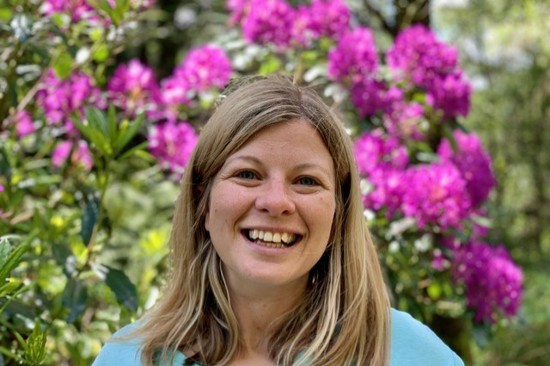
Recently, my husband and I joined a new church. We’d met with the leadership beforehand and asked questions, we knew their key values and agreed with their theology. It all looked good on paper and the first nine months went well.
Then rolled around Mothering Sunday. The double whammy of a complex relationship with my mother and experiencing infertility meant it was a service I would usually avoid. Still, I felt hopeful about the new church - I had seen them handle Father's Day sensitively, so I came in expectant. Sadly, all the stereotypes played out with references to “all mothers are amazing” and asking all mums to stand and receive a round of applause. This wasn’t my experience, nor was it something I could relate to. I felt my heart racing, and in the moment it kicked off a trauma response in my body – I became sensitive to the light and noise in the room, my breathing became fast and I wanted to leave the building. I’m a psychotherapist – I knew what was happening to me, but the speed at which it happened led me to struggle to regulate my emotions. Instead, I sent a strongly worded email to the church leadership explaining that we needed to do things differently.
Co-regulation
“Trauma isn’t what happens to us, but what happens inside our bodies as a result of what happens” says Gabor Maté, one of the world's leading experts in trauma. The impact of the experience remains in the subconscious and needs help to be processed and discharged, otherwise they are on high alert for danger. Even when someone recognises what their triggers are, things can still occur and cause the body and brain to become dysregulated as if they currently are not safe and the event or experience is happening again in the here and now. Moving from a place of dysregulation to regulation initially takes teamwork – co-regulation – before self-regulation can happen. Recognising this is one of the first steps in building emotional safety.
This might look like:
Grounding techniques to stay focused in the “here and now” such as naming the colours of items in the room, counting in 5s or listing 5 things that can be seen, 4 things that can be heard, three things to touch, 2 things to smell and 1 to taste.
Breathing techniques such as breathing in for a count of seven, holding the breath for a count of four and then breathing slowly out for a count of eight.
Trauma-awareness
Brene Brown who has written extensively about vulnerability and shame uses the term “lean into the discomfort”. My email was met with a church team who were able to join me in that discomfort. We talked extensively about what had been triggering in the service and what both they and I could do differently next time. I was very aware in that conversation how little trauma training they had had, and over the next year, we worked together to create meaningful change. Most churches want to adopt a trauma-aware or trauma-informed approach but it can be a struggle to do this well. We are often not aware of how to manage the impact of trauma in our own lives so we struggle when faced with someone else and their experiences, even if we intend to make them feel heard, met and understood.
When looking to make this change, it is important to begin from a trauma-aware state first. This looks like:
- acknowledging that some within our communities will have experienced trauma.
- recognising that acute trauma (experiencing a one-off event such as an assault, natural disaster or sudden bereavement) is different from chronic trauma (repeated or prolonged exposure to events such as ongoing abuse, living in an unsafe environment or enduring oppression) or vicarious trauma (being close to someone who has experienced trauma or from a role where trauma is prevalent).
- having an understanding that people might be sensitive to certain stimuli and react in involuntary ways when triggered.
- looking after ourselves and each other by offering listening, empathy and kindness, whilst also knowing the limits of what we can provide and where additional help can come from.
One of the most important experiences for me in talking with my church was being treated equally. They began by thanking me for drawing their attention to how I felt, and they apologised for their part in it. It would have been very easy for them to use shaming language with comments like “Just read the bible and pray about it, this is between you and God” or “When that happened to me I just ignored it and moved on” which is not uncommon. Shaming language can lead to fear-driven behaviour, and feeling afraid will exacerbate dysregulation.
Begin from a place of regulation yourself: Notice the emotion you are experiencing and own it “I am feeling nervous about this conversation, so I will listen to some music and pray beforehand so I am bringing a calm “me” into the situation rather than an anxious “me”.
Be attuned to the other person: Notice and name what is happening, and become curious: “I can see you are frustrated. I wonder if you’re frustrated with how the service went this morning.”
Be ready to offer a repair or a rebuilding of trust: Think together about how the restoration can occur and how the situation can be moved forward or resolved.
Supporting recovery
Supporting recovery and healing builds on the earlier foundation of being trauma-aware. It comes from a place of being trauma-informed. One of the major predictors of how someone heals from trauma is their connectedness to community, relationships and culture and a healthy community which includes trauma-informed individuals feeds this recovery. The purpose of being trauma-informed is not to treat trauma-related difficulties, which is the role of specialist services and practitioners but to address the barriers that people who have affected trauma may experience such as:
Known spaces or people of safety: Checking in with individuals to ascertain what else can be done to avoid re-traumatisation and exploring together policies, practices and safeguarding arrangements.
Transparency within the organisation: Honesty from leadership around change and clear expectations without overpromising
Offering choice and empowerment: Listening to needs and wishes and where possible addressing areas where a lack of safety or control can cause difficulties in developing trusting relationships.
Healing from trauma is a complex and multifaceted process that requires a combination of individual and societal interventions. Trauma survivors need access to safe environments, professional therapeutic support, community responses and societal efforts to prevent further harm. No single approach will work for everyone as trauma manifests differently in each person. However, by integrating a range of healing modalities we can offer trauma survivors the support needed to rebuild their sense of safety.

About the author
Jenny is an Integrative Psychotherapist based in Coventry and a resources specialist at Youthscape. She is also an advisor to Unique Connections who offer training and support to professionals working with young people who self-injure and have complex needs or autism.
